The latest GSA report reports for the first time more than 400 detected devices (Picture: GSA)
The September report of the GSA now lists over 400 5G devices. This is significantly more than at the beginning of the year – but in the majority of cases these are not yet available for purchase. The situation is also bad for industrial users: 5G modules for routers and controllers are still thin on the ground.
The Global Mobile Suppliers Association (GSA) reports a new record: for the first time, the number of 5G devices presented has exceeded the 400 mark. According to the 5G Decive Ecosystem Report, 190 of the 401 devices covered are available in quantities, 211 have only been announced so far.
Strong smartphone and consumer segment
Smartphones account for almost half of the reported devices. This includes 181 models, of which 138 are already on the market. In addition there are six 5G-capable tablets. The CPE (Customer Premises Equipment) category, which mainly comprises modems, gateways and routers for indoor and outdoor applications, accounts for 100 devices. In particular, FWA devices (Fixed Wireless Access), i.e. stand-alone modems for wireless 5G data reception at home or in the office, are in the focus of the providers. In Germany, routers from HMS, Phoenix Contact, Sierra Wireless and Ursalink are available, among others.
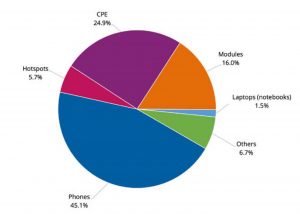
At least several communication modules have already been announced. But the majority of 5G-capable devices are smartphones. (Picture: GSA)
Industry has to wait
The modules and expansion cards, which are also relevant for the industry and can be used to equip machines, controllers and self-developed routers, for example, have also seen growth. The GSA has 64 models in its database – but this variety has so far only been virtual. According to research by fuenf-G.de, offers from Advantech, Fibocom, Quectel, Sierra Wireless, Sunsea AIoT (Simcom, Longsung), Telit and Thales, among others, can be found in this country.
However, what is listed with manufacturers and distributors is not necessarily available. Long waiting periods, from a few weeks to several months, are not uncommon. However, it is usually worthwhile to ask for test samples or developer kits to start development. It is also noticeable: the narrow range of products obviously takes the pressure off the price competition.
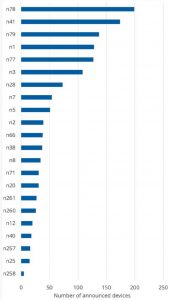
Band n78 – this corresponds to the frequency band at 3.6 GHz – is the most commonly supported. (Picture: GSA)
Fog around supported frequencies thinning
As the GSA states, not all announced devices have the technical specifications known. However, the situation is improving with the increasing number of devices that are actually available on the market. For example, the supported frequencies can now be better estimated.
The GSA now has concrete information on the tapes used for 83 percent of the devices. For the first time, more than 300 devices have been registered for the sub-6 Ghz range. Around 16 percent of the listed devices can use both the spectrum below and above the 6 GHz limit. The most frequently supported bands include n78, n41, n79, n1, n77 and n3. About half of all devices can use the n78 band (3300-3800 MHz). An overview of all 56 and LTE bands can be found in our Overview mobile radio bands and frequencies.
The monthly 5G-Devices-Report is based on evaluations of GSA GAMBoD-database. This is exclusively available to GSA members and associated partners. Companies, authorities and research institutes can register with the GSA to gain access.


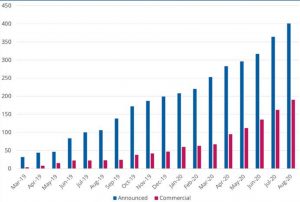


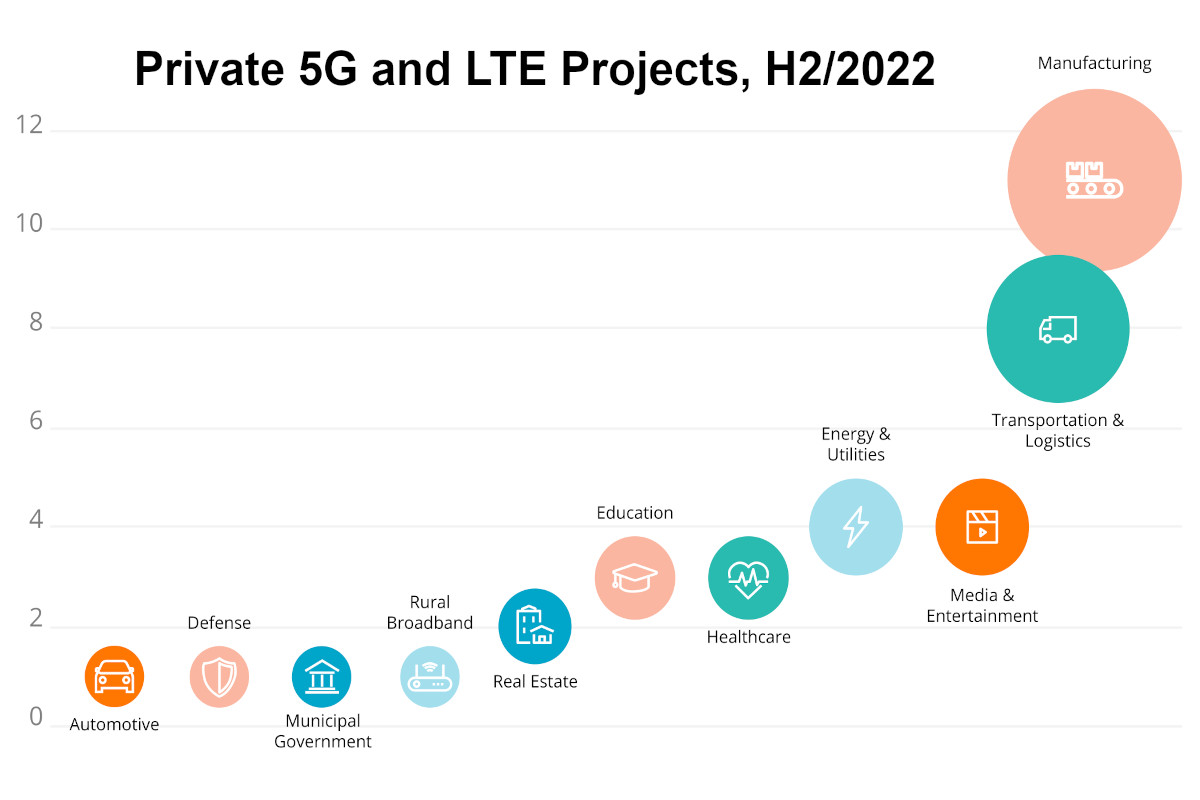
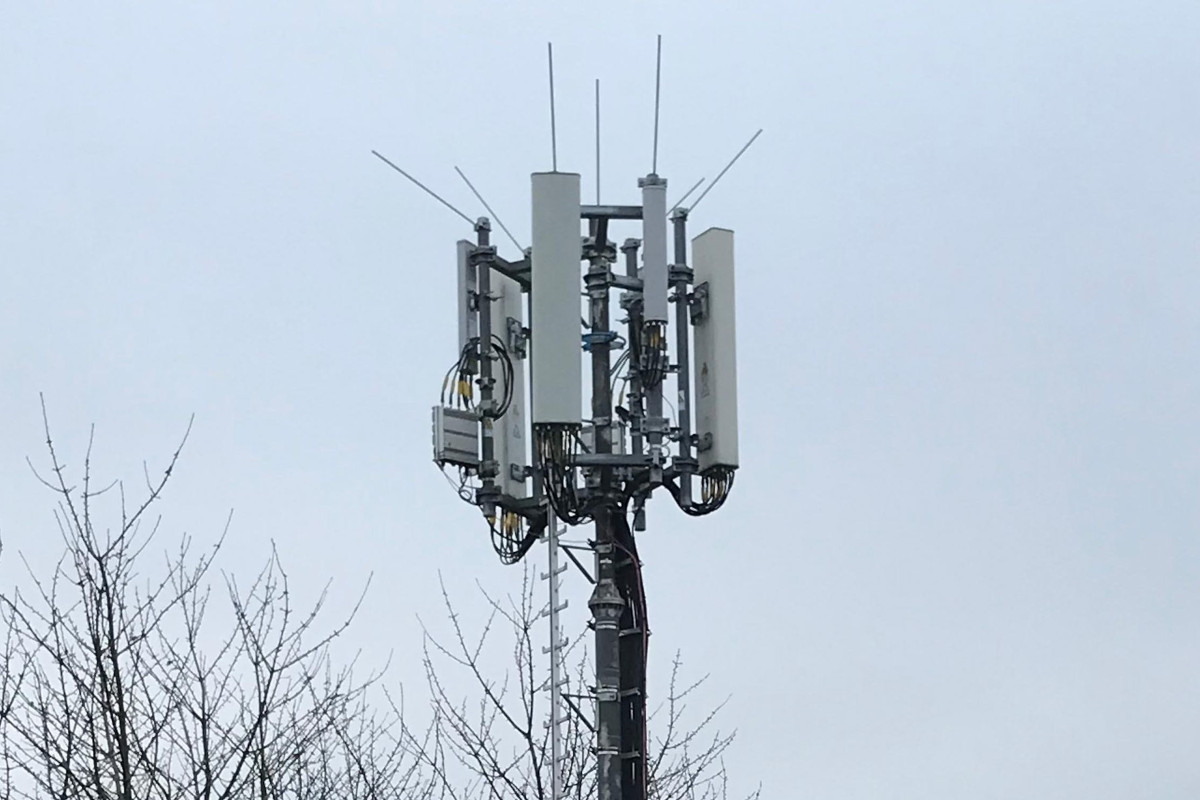
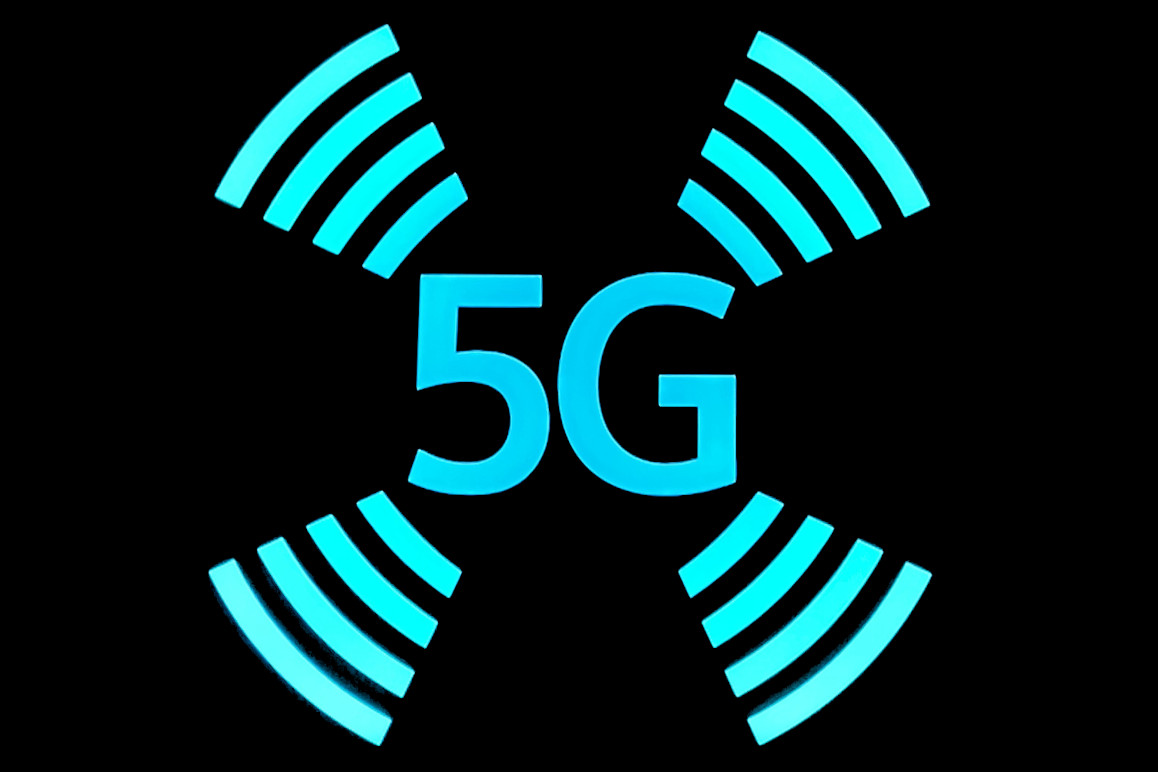


Leave A Comment